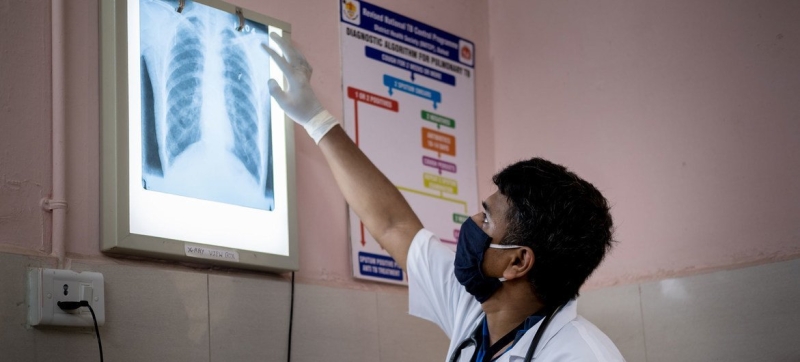
Global elimination of tuberculosis is impossible without accelerated progress in countries with the highest burden. Global progress against tuberculosis is at risk due to lack of funding Healthcare
The World Health Organization (WHO) released its annual Global Report on Tuberculosis on Wednesday, warning that despite remarkable advances in diagnosis, treatment and innovation, lack of funding and unequal access to care could reverse progress.
Tuberculosis claimed more than 1.2 million lives and affected about 10.7 million people last year, according to the WHO, remaining one of the world’s deadliest infectious diseases.
Reducing the global burden of tuberculosis
WHO Director-General Tedros Adhanom Ghebreyesus said the decline in the global burden of tuberculosis and progress in testing, treatment and social protection is encouraging news after years of setbacks. However, he said, “progress is not victory” and the fact that the disease continues to claim lives every year, despite its prevention and cure, is “inexcusable”. WHO calls on countries to accelerate efforts to eliminate tuberculosis by 2030.
Between 2023 and 2024, TB cases fell by nearly two percent and deaths dropped by three percent, according to the report. This indicates the restoration of key health services after the COVID-19 pandemic.
Progress is particularly noticeable in the WHO African and European Regions: from 2015 to 2024, in Africa, morbidity decreased by 28 percent and mortality by 46 percent; in Europe – by 39 and 49 percent, respectively. More than 100 countries have achieved a 20 percent reduction in incidence and 65 countries have achieved a 35 percent or greater reduction in mortality, meeting the first goals of WHO’s End TB strategy.
However, global elimination of the disease will not be possible without accelerating progress in countries with the highest burden. In 2024, 87 percent of all new TB cases were reported in 30 countries, with eight of them—India, Indonesia, the Philippines, China, Pakistan, Nigeria, DR Congo, and Bangladesh—accounting for 67 percent of the total. In 2000, timely treatment saved approximately 83 million lives. In 2024, 8.3 million people received treatment, accounting for 78 percent of all cases. In 54 percent of cases, the disease was detected through rapid diagnosis, and the effectiveness of treatment of sensitive forms of tuberculosis reached 88 percent.
Among 30 countries with a high TB burden, social protection coverage ranges from 3.1 percent in Uganda to 94 percent in Mongolia, and in 19 countries it is below 50 percent. The report also highlights the role of risk factors – malnutrition, HIV, diabetes, smoking and alcohol – and the need for a multisectoral approach to combating the epidemic.
Funding gap
However, progress remains far from the goals set out in the WHO strategy. Funding for the fight against tuberculosis has stalled, with only $5.9 billion accumulated in 2024 – just over a quarter of the $22 billion target. Cuts in international aid from 2025 could lead to two million additional deaths and ten million new cases by 2035. Research funding is also lagging, at $1.2 billion in 2023, just 24 percent of target. Still, by August 2025, 63 new diagnostic tests, 29 drugs and 18 vaccines were in development.
“We have entered a decisive phase in the fight against tuberculosis,” said Teresa Kasaeva, director of WHO’s department of HIV, tuberculosis, hepatitis and sexually transmitted infections. She said funding cuts and persistent risks threaten gains, but with political will, investment and global solidarity, humanity can defeat this ancient disease.
